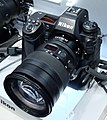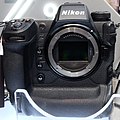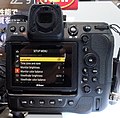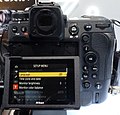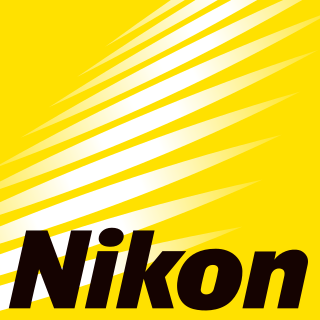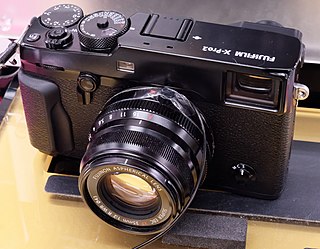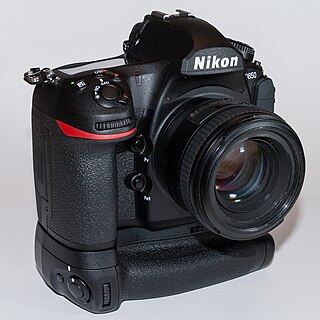 Nikon Z 9 logo | |
| Overview | |
|---|---|
| Maker | Nikon |
| Type | Full-frame mirrorless interchangeable-lens camera |
| Released | 24 December 2021 |
| Intro price | JPY 700,000 (body only) USD 5,500 |
| Lens | |
| Lens mount | Nikon Z-mount |
| Sensor/medium | |
| Sensor type | Stacked back-illuminated CMOS sensor |
| Sensor size | Full frame (35.9 x 23.9 mm) Nikon FX format |
| Sensor maker | Sony [1] |
| Maximum resolution | 8,256 x 5,504 (45.7 effective megapixels) |
| Film speed | Native range of ISO 64-25,600 (expandable to 32-102,400) |
| Recording medium | Dual XQD card/CFexpress Type-B |
| Focusing | |
| Focus | Single-servo AF (AF-S) Continuous-servo AF (AF-C) Full-time AF (AF-F; only available in video mode) Predictive focus tracking Manual focus |
| Focus areas | 493 points (single-point AF) with 90% coverage |
| Exposure/metering | |
| Exposure | TTL metering using camera image sensor |
| Exposure modes | Programmed Auto [P] with flexible program; Shutter-Priority Auto [S]; Aperture Priority Auto [A]; Manual [M] |
| Exposure metering | TTL metering using camera image sensor Highlight-weighted metering: -3 to +17 EV (ISO 100, f/2.0 lens, 20 °C/68 °F) |
| Metering modes | Matrix metering Center-weighted metering Spot metering Highlight-weighted metering |
| Flash | |
| Flash | No built-in flash |
| Flash synchronization | 1/200s (up to 1/8000s using high-speed sync) |
| Shutter | |
| Frame rate | Up to 120 fps in 11 MP continuous (C120), up to 60 fps in 19MP continuous (C60), up to 30 fps at full-resolution with JPEG output (C30), up to 20 fps with RAW output |
| Shutter | Electronic shutter |
| Shutter speeds | 900s – 1/32000s |
| Continuous shooting | 20fps / 30 fps / 120fps (expand) |
| Viewfinder | |
| Viewfinder | Quad-VGA (1280x960) EVF (3690000 dots), 0.8x magnification with 50 mm lens, 3000 nits brightness |
| Image processing | |
| Image processor | Expeed 7 |
| White balance | Auto (keep white, keep warm colors, keep overall atmosphere), natural light auto, direct sunlight, cloudy, shade, incandescent, fluorescent (3 types), flash, manual white point (2500K-10000K), preset manual (up to 6 values) |
| General | |
| Video recording | 8.3K up to 60 fps in 12-bit N-RAW, 8K up to 30 fps with N-log, 4.1K up to 60 fps in 12-bit ProRes RAW HQ, 4K up to 120 fps, 1080p up to 120 fps |
| LCD screen | 3.2-inch vertically and horizontally tilting TFT LCD with 2.1 million dots with touchscreen |
| Battery | EN-EL18d (backwards compatible with EN-EL18/a/b/c batteries) |
| AV Port(s) | USB Type-C, HDMI Type-A, 3.5 mm microphone jack, 3.5 mm headphone jack |
| Data Port(s) | IEEE 802.11b/g/n/a/ac/Wi-Fi, Bluetooth Low Energy, Gigabit Ethernet |
| Body features | In-Body Image Stabilization, GPS receiver |
| Dimensions | 149×149.5×90.5 mm (5.87×5.89×3.56 in) |
| Weight | 1340g (with battery, memory card) 1160g (body only) |
| Made in | |
The Nikon Z 9 is a full-frame mirrorless camera produced by Nikon. The camera was announced on October 28, 2021.
Contents
The Z 9 has the same 45.7 MP resolution as the Z 7 and Z 7II cameras, but uses a much faster stacked CMOS sensor which improves autofocus and continuous shooting performance. [2] [3] The continuous shooting capabilities of the Z 9 significantly exceed those of Nikon's previous Nikon D6 while providing more than double the resolution. The Z 9 is the first Nikon Z camera to support 8K video, which can be recorded internally at 60 fps in 12-bit N-RAW.
The Z 9 is the first flagship full-frame camera without a mechanical shutter. [4]
The Z 9 won Camera Grand Prix 2022 Camera of the Year and Readers Award. [5]
In January of 2024, Nikon revealed that NASA launched 13 unmodified Nikon Z9 cameras to the International Space Station (ISS) via the 20th Northrop Grumman commercial resupply services mission. [6] [7] On February 29, 2024, NASA revealed a signed agreement between them and Nikon to develop the Handheld Universal Lunar Camera (HULC) as the first handheld camera to be used on the Moon, for use beginning with the Artemis III mission. The resulting design consists of a modified Z9 camera with thermal shielding, custom grip with modified buttons, modified electrical components to minimize issues caused by radiation. [8] [9]
The new Nikon Z9 will replace the aging high-end Nikon D5 and D6 DSLRs on board the ISS. Nikon Corporation and NASA shared a long history together being the camera brand that continuosly supplies the agency with modified cameras since the 1970s. [10]

